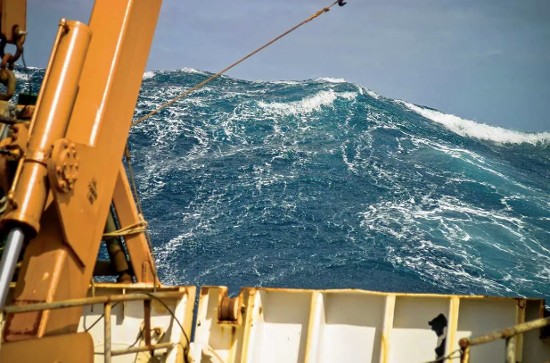December 3, 2022, a rogue wave killed one and injured four sailing on a cruise ship in Antarctic waters.
February 14, 2022, CNN reported a MarineLabs buoy approximately 7 kilometres (4.3 miles) off of Vancouver Island, British Columbia measured a rogue wave 17.6 metres (58 feet) in height.
A more famous historic reference involved the RMS Lusitania sunk off Ireland by a German U-boat during World War One. It was January 10, 1910, when the Lusitania encountered a 23-metre (75-foot) rogue wave to the west of Ireland that was so tall it smashed into the bridge with water reaching the wheelhouse.
More recently the European Space Agency (ESA) has been using remote sensing satellites to search for rogue waves in the ocean. In a three-week period, ESA recorded ten rogue waves over 25 metres (82 feet) in height in the South Atlantic Ocean.
Rogue wave reports are rare but have occurred often enough in recent years to lead to scientists and engineers wanting to better understand what causes them.
Let’s begin with a definition. What is a rogue wave? It’s not a tsunami or tidal wave caused by earthquakes, but rather an ocean surface wave that randomly grows to be at least two times taller than surrounding surface water. These waves have plowed into ships, killed and injured crew and passengers, and even flipped and sunk some vessels, even large ones.
Once described as a 1-in-10,000-year phenomenon, it is pretty clear that their occurrence is far more frequent. Climatologists and oceanographers are convinced that rogue waves are on the increase because of the impact global warming is having on oceans.
At the University of Sydney in Australia, scientists have built a 30-metre (almost 100-foot) wave tank to create rogue waves. In it, they are recreating the complex conditions that can be found in the open ocean using a mechanical wave generator.
For years, it was thought that the physical cause of rogue waves was the piling up of water surging in one direction with modulation frequency interruptions that caused the water to pile up unexpectedly.
But the University of Sydney researchers believed that rogue waves came in ocean conditions when multi-directional forces on the surface created instability leading to waves called “breathers” that were non-linear suddenly growing and disappearing. They have used their wave tank to demonstrate how multi-directional systems produce breather waves even in the presence of other ocean phenomena. The wave tank experiments show that waves crossing and colliding at angles of 180 degrees produce breathers. The phenomenon happens most commonly in ocean extreme weather events.
Adjunct Professor of Civil Engineering Amin Chabchoub, who participated in the wave tank study is quoted in a University of Sydney news release stating, “The more we unlock the mystery that surrounds how rogue waves appear from flat, calm, or complex seas, we’re creating a better understanding of when and where these giants of the sea are likely to appear. Such findings are also crucial in developing a reliable forecast tool in offshore, but also coastal areas. Ultimately, this will benefit maritime navigation, and on and offshore coastal operations.” He goes on to state, “If you’re in a boat and get hit by a 25 to 30-metre wave, it’ll most likely be game over. Unfortunately, because of climate change, in the future, we will see an increase in storm intensities, with more frequent cases of extreme waves.”
















